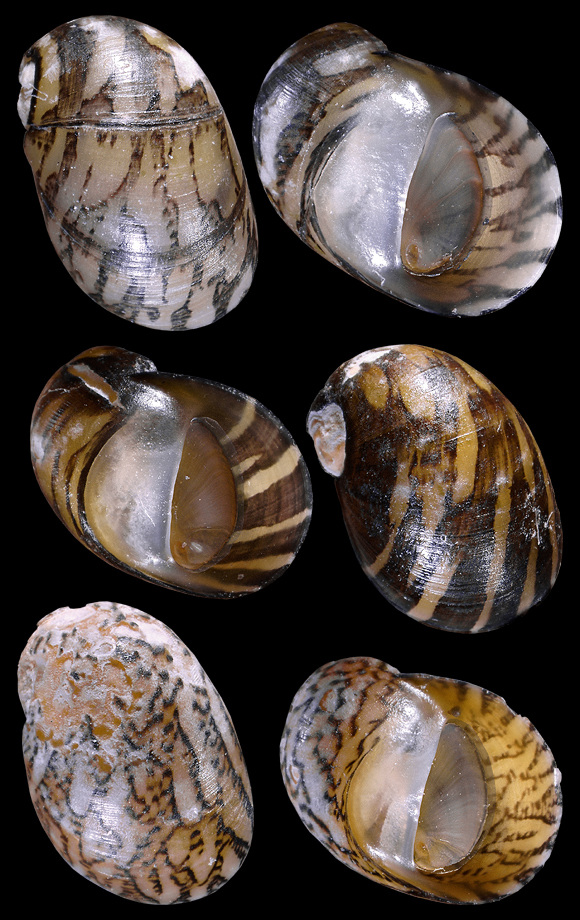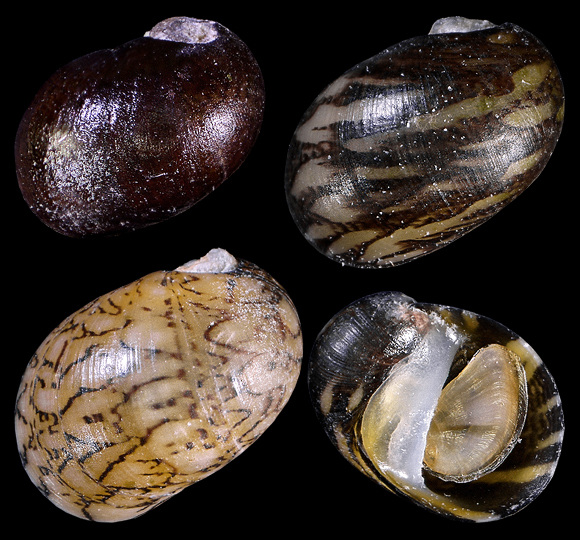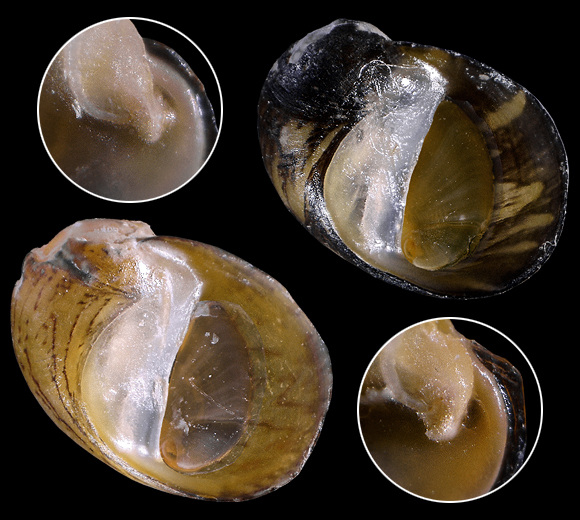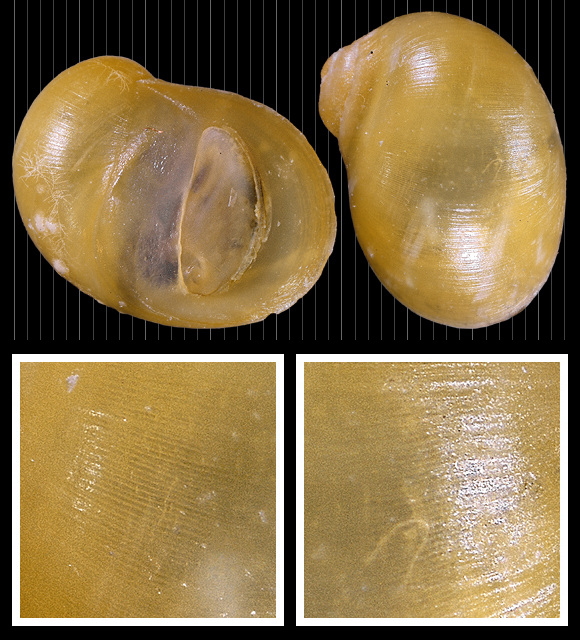– second part –
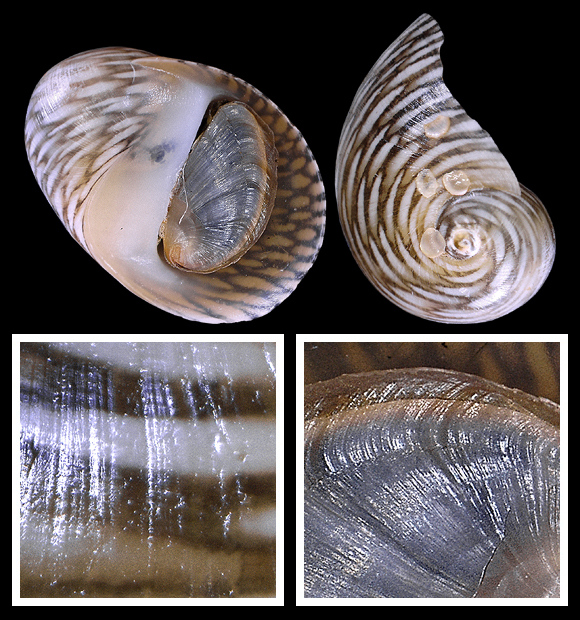

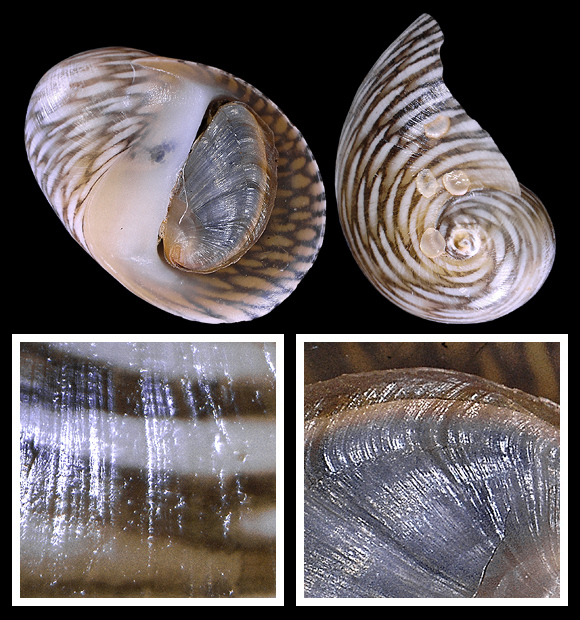
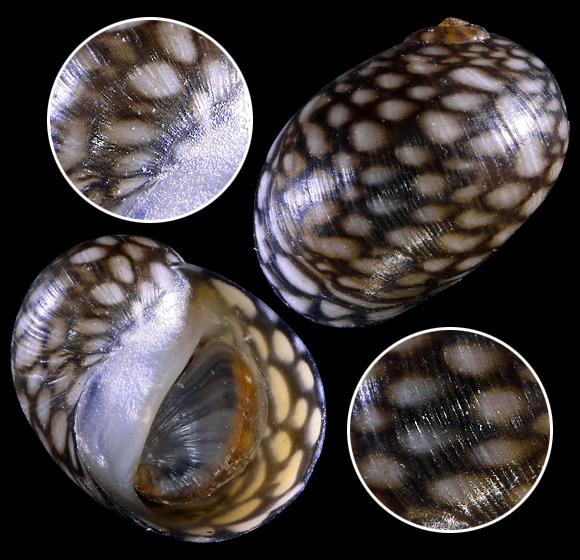
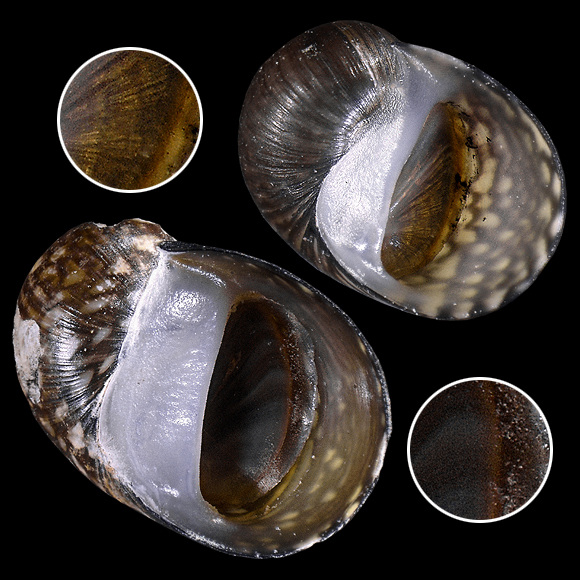
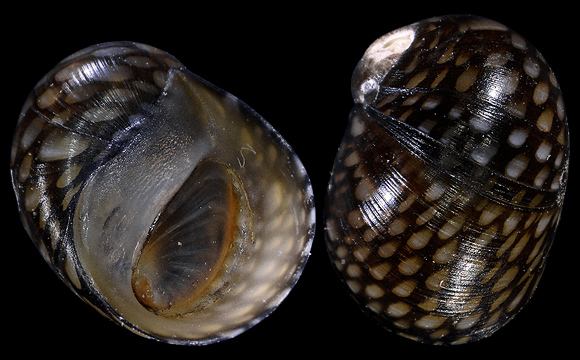
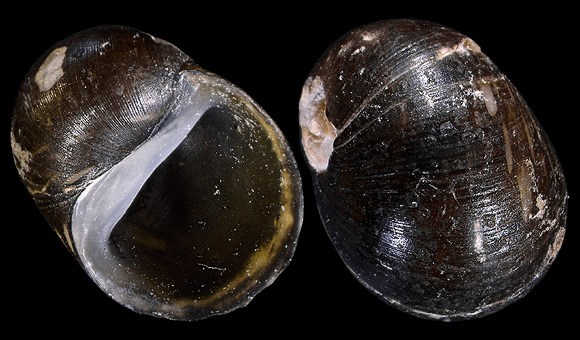
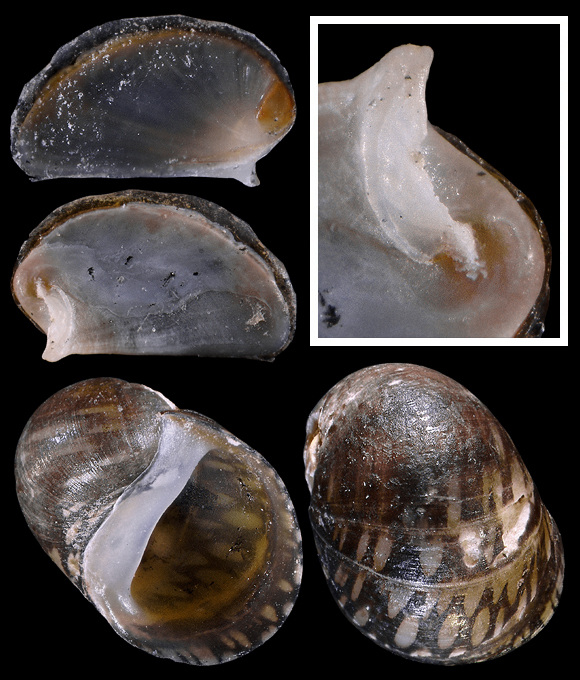
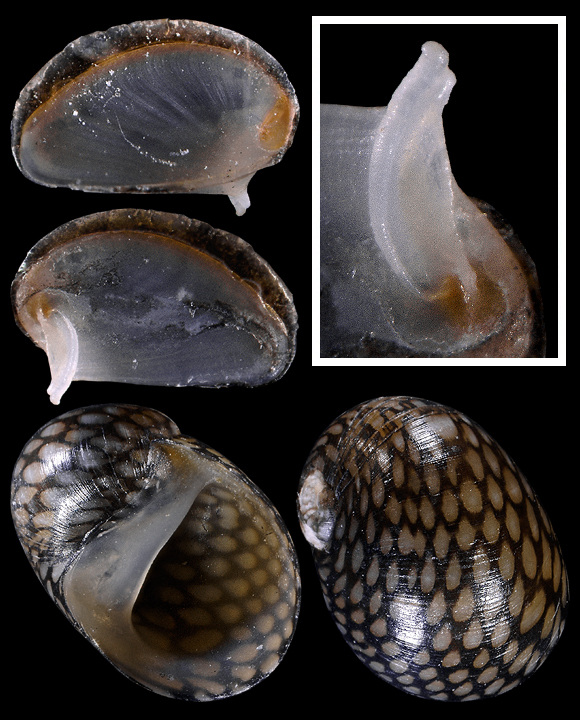
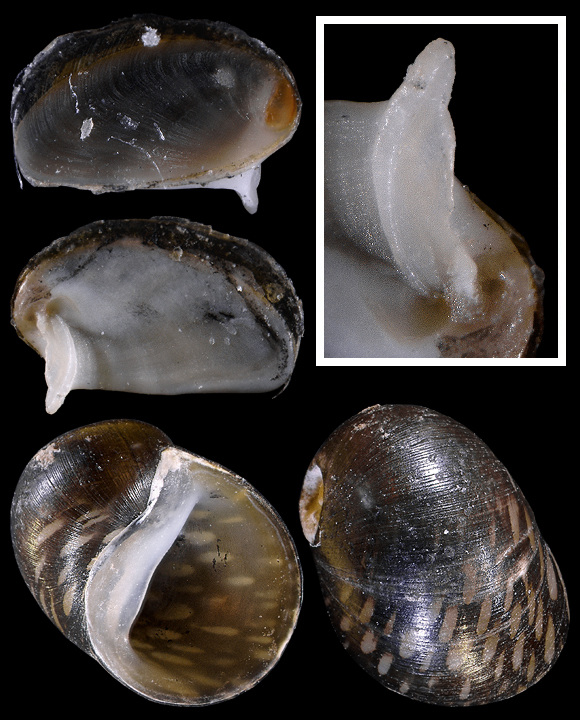


Two morphs are recognized in Turkey: “heldreichi” s.s, large, restricted to Eğirdir and Beyşehir Lakes, in Isparta Province; “heldreichi fluvicola” Schütt & Şeşen 1992, smaller, living in streams and springs in Antalya, Burdur, Afyon, Izmir, Manisa, Aydin, Denizli and Isparta.
« This species is generally very close to N. fluviatilis, but with the small size of the spire and the mouth narrowed anteriorly, it strays from it: on top of this comes the striking colouring of the mouth. From T. von Heldreich, the Berlin Museum received a Neritine, similar in shape, but much smaller […] with a more jagged design on a more yellow-brown background, also provided with three darker zones, coming from the salt source Almyros at Herakleion in Candia (Crete). » – E. von Martens: “Die Gattung Neritina”, Systematisches Conchylien-Cabinet Bd.2:Abt.10, Nürnberg 1879, p.225.
Above: specimens collected on rocks and stones in Manavgat river, Hisarönü Parkı, near the ruins of the castle, Manavgat, Antalya province, S. Turkey. 5,5-7,5mm. These shells bear the jagged pattern seen on the specimens given by von Helreich. This pattern is very close to that of the fluviatilis pictured on top of the previous page. Indeed, heldreichi is now recognized as a synonym of fluviatilis.
« This species is generally very close to N. fluviatilis, but with the small size of the spire and the mouth narrowed anteriorly, it strays from it: on top of this comes the striking colouring of the mouth. From T. von Heldreich, the Berlin Museum received a Neritine, similar in shape, but much smaller […] with a more jagged design on a more yellow-brown background, also provided with three darker zones, coming from the salt source Almyros at Herakleion in Candia (Crete). » – E. von Martens: “Die Gattung Neritina”, Systematisches Conchylien-Cabinet Bd.2:Abt.10, Nürnberg 1879, p.225.
Above: specimens collected on rocks and stones in Manavgat river, Hisarönü Parkı, near the ruins of the castle, Manavgat, Antalya province, S. Turkey. 5,5-7,5mm. These shells bear the jagged pattern seen on the specimens given by von Helreich. This pattern is very close to that of the fluviatilis pictured on top of the previous page. Indeed, heldreichi is now recognized as a synonym of fluviatilis.
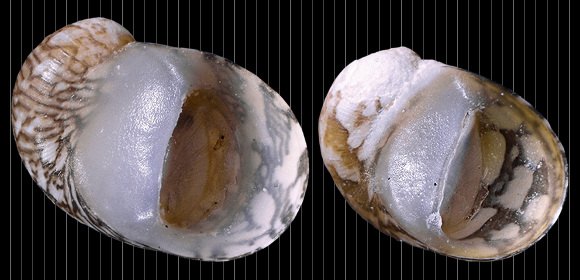
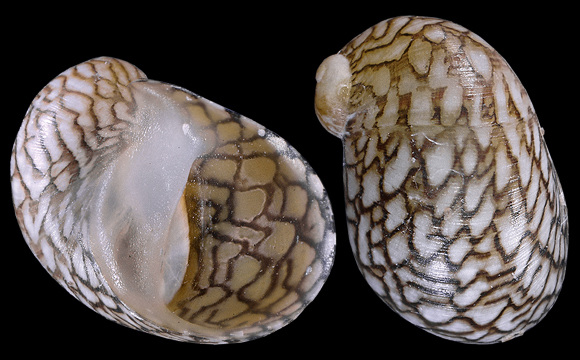

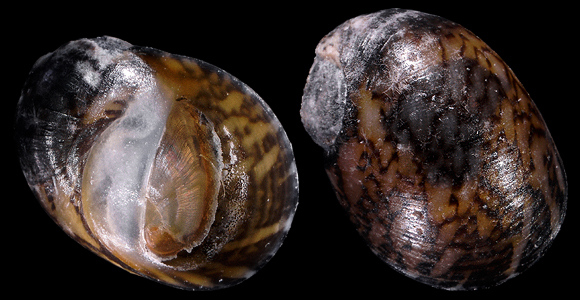
The “Almyros” salt source von Martens is talking about is a pool located west of Heraklion; this is a brackish karst spring that is at the origin of a small coastal stream that flows into the sea on the territory of Skafidáras, Gázi. This spring is one of the major water supplies of the northern Crete.
A “dniestroviensis”, or “heldreichi” subvariant “fluvicola”, a little “intextus” and somewhat “marmoreus”, from the Almyros of Gázi. 3mm. Dogs and cats may be less variable than Theodoxus fluviatilis.
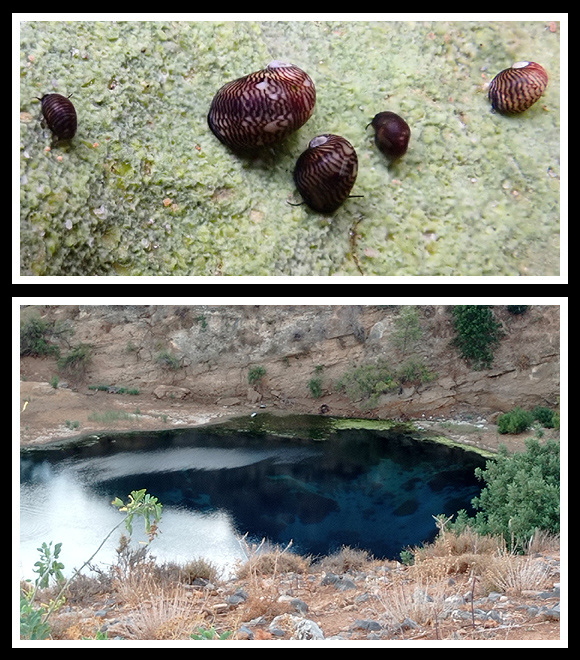
Specimens on stones, at the brackish water spring of Gázi. Notice the « three darker zones » described by von Martens on the specimens collected by Theodor von Heldreich. The latter was a german botanist, specialist of the greek flora.
The freshwater of Gazí emergence comes mainly from the Psilotiris Mountains, and reaches Almyros in about nine hours only. It is stopped by the Tylissos-Krousónas fault, which separates the uplifted Psilotiris system from the collapsed Heraklion plain, and receives here some sea water. « At this time, the most satisfying assumption is the digging of an important aquifer, deep below the current sea-level, during the regression of the end of the Miocene. » – R. Maire: La Haute Montagne calcaire, Presses Universitaires de Bordeaux 1990, chapter III “Les hauts karsts de Crète”, section 155.
The freshwater of Gazí emergence comes mainly from the Psilotiris Mountains, and reaches Almyros in about nine hours only. It is stopped by the Tylissos-Krousónas fault, which separates the uplifted Psilotiris system from the collapsed Heraklion plain, and receives here some sea water. « At this time, the most satisfying assumption is the digging of an important aquifer, deep below the current sea-level, during the regression of the end of the Miocene. » – R. Maire: La Haute Montagne calcaire, Presses Universitaires de Bordeaux 1990, chapter III “Les hauts karsts de Crète”, section 155.
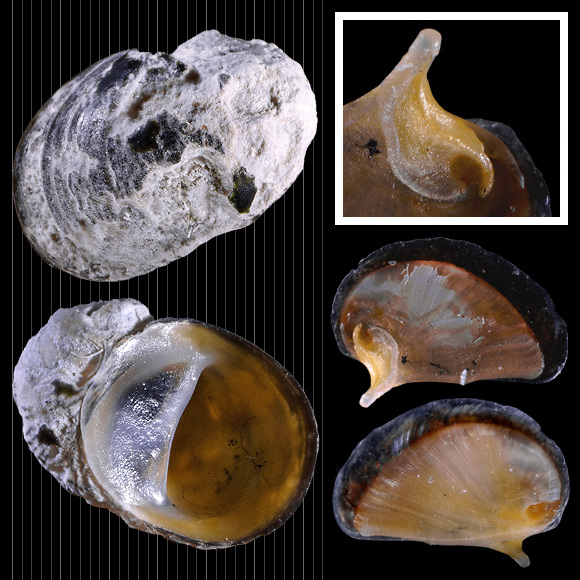
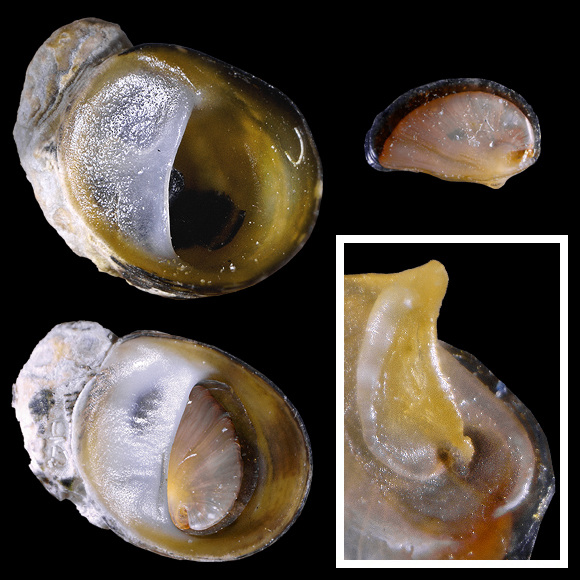
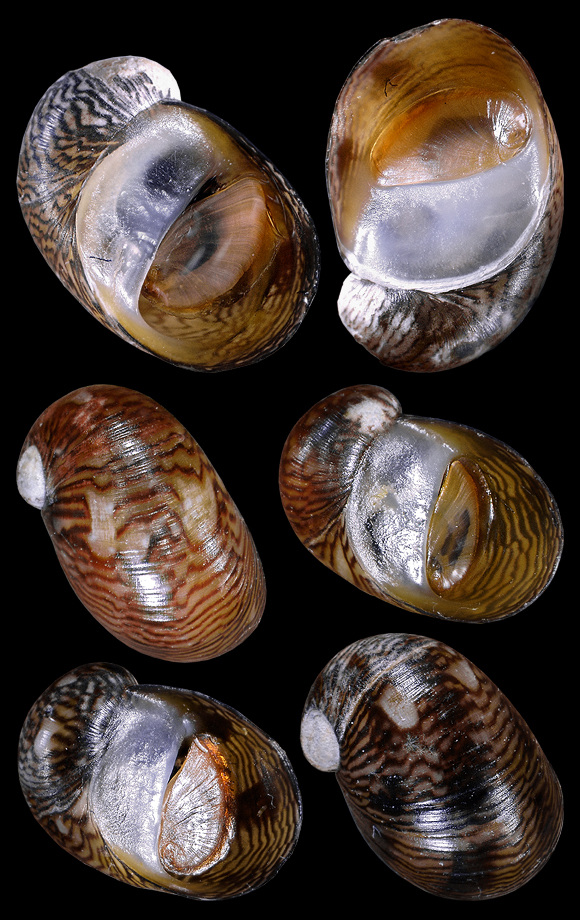


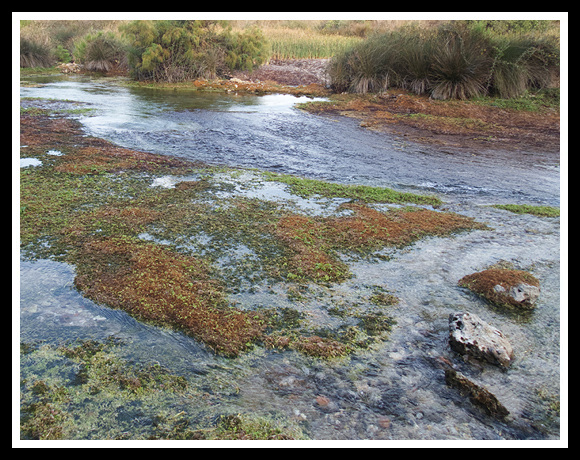
The Almyros flood of Georgioúpoli, immediately downstream the emergence. This river seems to be corrosive enough to endanger the population of fluviatilis that lives here. Old specimens do not exist, and the apical area is often very destroyed in the adults. Examples below:
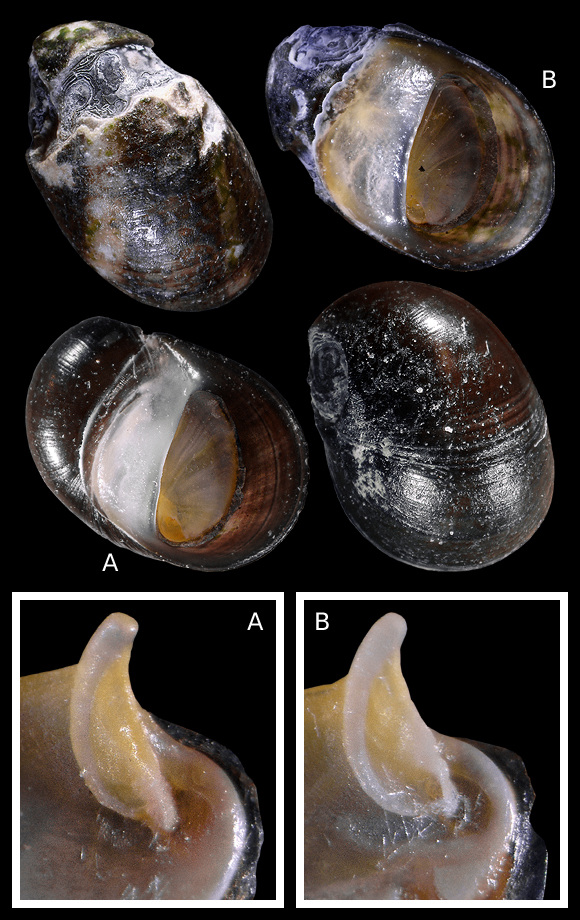
Variations of shape in young adults from the emergence. Notice how the older parts of the shells are attacked. This phenomenon, often encountered in all the species of Nerites, is very pronounced in the shells found at the emergences of Georgioúpoli and Gázi. Sizes ≈ 4,2mm.

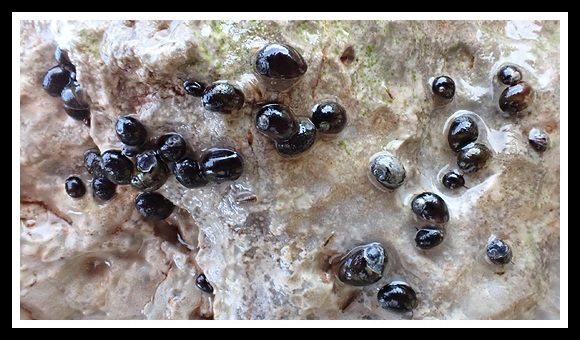

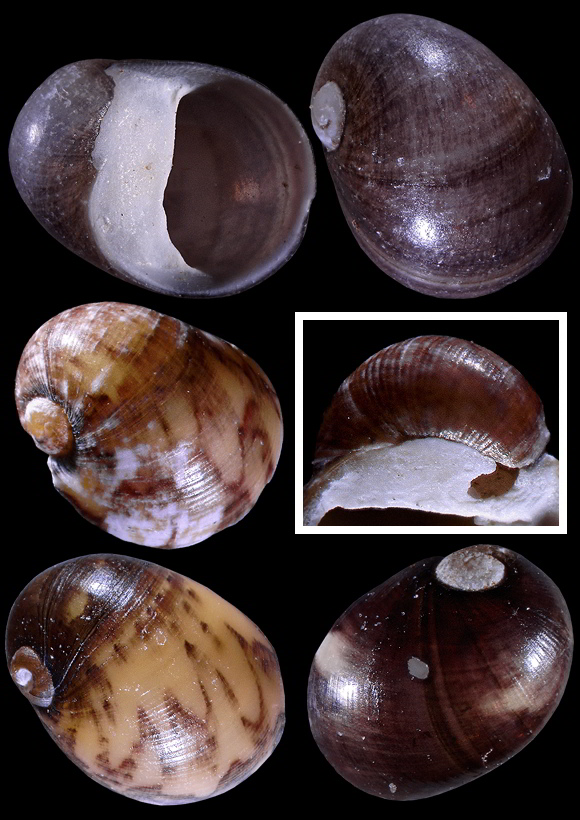
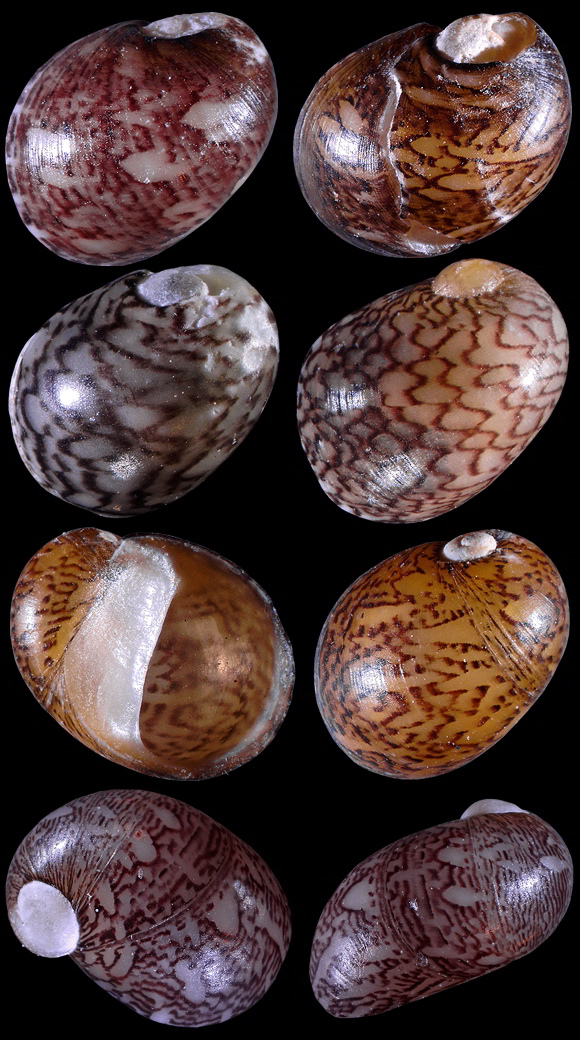

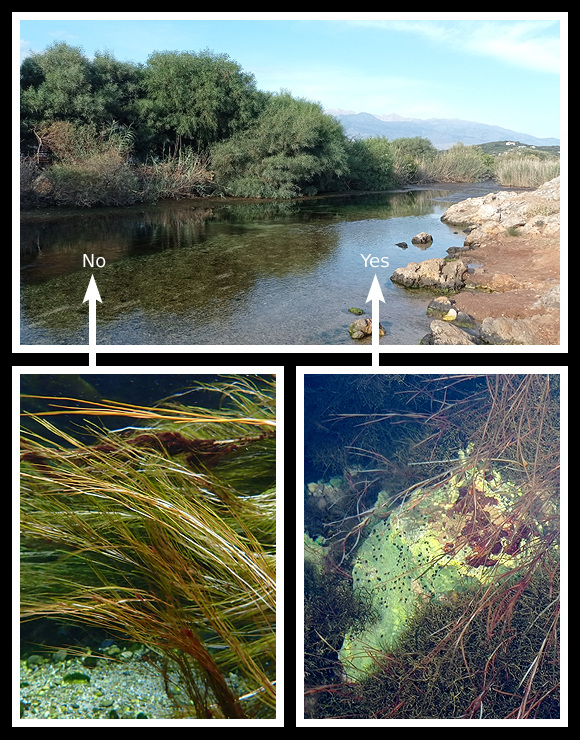
Kalyvaki. The genus Theodoxus appreciates the organic film that is found on aquatic plants, but the depth at which the latter live here, in an almost pure marine water, forbids the snails to reach them; this is the reason why they focus on the stones and pebbles that lay on shallower bottoms, in freshwater.
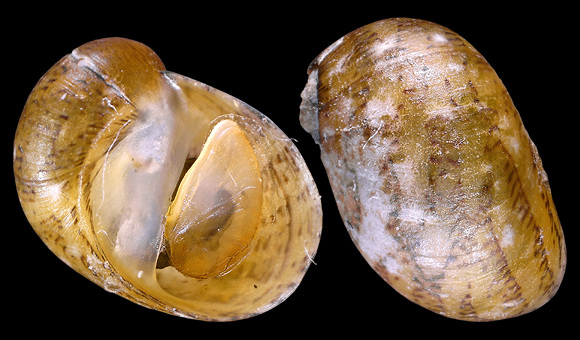
Yellow periostracum.
